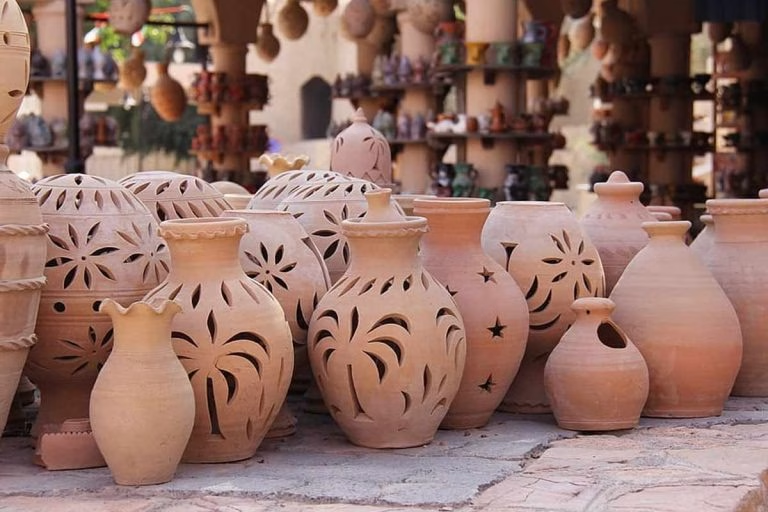Terracotta, derived from the Italian words “terra” (earth) and “cotta” (cooked), is a form of earthenware that has been molded and fired for centuries to create an array of artifacts that capture the essence of human history. These clay creations, shaped by skilled artisans, not only stand as testaments to ancient craftsmanship but also hold a profound historical, geographical, and cultural significance.
Making Process:
The making of terracotta artifacts is an intricate process that involves several stages. It typically begins with the extraction of clay from the earth, which is then purified and mixed with water to achieve the desired consistency. Artisans skillfully shape the clay using various techniques, such as coiling, pinching, or molding, depending on the intended design.
After the artifact is shaped, it undergoes a drying process to remove excess moisture. Once dried, it is fired in a kiln at high temperatures to harden the clay and make it durable. The firing process also imparts the characteristic reddish-brown color to terracotta, though variations in color can be achieved through different firing techniques.
Historical Significance:
Terracotta artifacts have a rich historical legacy, dating back to ancient civilizations. One of the most famous examples is the Terracotta Army of China, a collection of life-sized clay soldiers and horses buried with the first Emperor of China, Qin Shi Huang, in the 3rd century BCE. These intricately crafted figures serve as both a testament to the skill of ancient Chinese artisans and a symbol of the emperor’s belief in an afterlife.
Geographical Significance:
Terracotta artifacts have been found in archaeological sites around the world, highlighting their global appeal. Regions such as Greece, Italy, India, and the Middle East boast a long history of producing remarkable terracotta pieces. The diverse terracotta traditions across different cultures showcase the adaptability of this medium to express local aesthetics and stories.
Cultural Significance:
Terracotta artifacts often hold deep cultural significance, reflecting the values, beliefs, and artistic styles of the communities that create them. In some cultures, terracotta is used to craft religious figurines or ceremonial objects, while in others, it serves practical purposes like pottery or architectural ornamentation. The artistry embedded in terracotta pieces serves as a cultural bridge, connecting generations and preserving the heritage of a community.
List of Terracotta Products:
- Pottery: From simple vessels to intricately designed pots and vases, terracotta pottery has been a staple of functional and decorative art for centuries.
- Sculptures: Terracotta sculptures range from small, intricate figurines to larger-than-life statues, depicting scenes from mythology, daily life, or religious narratives.
- Architectural Ornaments: Terracotta tiles, friezes, and decorative elements have adorned buildings and temples across various cultures, adding a touch of elegance and cultural identity.
- Cookware: Terracotta cookware, such as baking dishes and clay pots, is valued for its ability to distribute heat evenly and enhance the flavors of the food.
- Tiles: Terracotta tiles, known for their warmth and rustic charm, have been used for flooring and roofing in diverse architectural styles.
Conclusion:
Terracotta artifacts stand as timeless witnesses to the creativity and ingenuity of human civilizations throughout history. From the ancient terracotta warriors of China to the vibrant pottery traditions of Greece and beyond, these clay creations continue to captivate with their beauty and cultural significance. As we appreciate the artistry and craftsmanship behind terracotta, we also celebrate the enduring legacy of a medium that has shaped the way we perceive and interact with the world.

